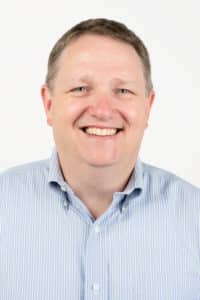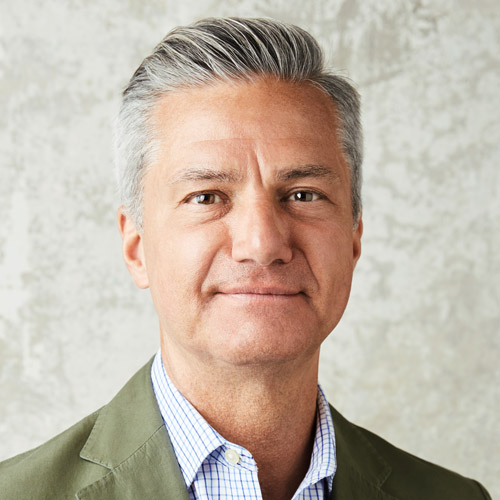
“I like to think my career really started in college,” Tom Buechele says. It’s a statement that turns out to be true on multiple levels.
Today, Buechele is the vice president for campus operations at the School of the Art Institute of Chicago (SAIC), but, once upon a time, he was just a “bright-eyed kid from suburban Kansas City,” arriving at the SAIC for his first day of college.
“I was always a creative kid,” he says. He had an early interest in photography, and his interest in the SAIC was sparked by his grandfather, an architect who took classes at the school back in the 1920s. Once he arrived as a student, he found himself working in the school’s media center, where he assisted teachers and students with media and studio projects. After graduating, he worked for a printer and publisher of fine art lithographs in Los Angeles, alongside acclaimed modern artists such as Robert Rauschenberg and Roy Lichtenstein. The Windy City beckoned, however, and Buechele was soon drawn back into the orbit of his alma mater as he continued to develop his own artistic work.
“There’s a thing about institutions, especially ones with smaller student bodies,” he says, emphasizing the sense of community that’s part and parcel of both the SAIC and Chicago as a whole. Buechele expanded on his collegiate role with a position on the technical side of things for the SAIC, then moved into capital planning and academic resources for the school, then finally found himself in charge of all its operations. “In my career, I progressed from the purely academic side to a larger institutional role and continue to do so,” he says. “I think it’s been a mutually beneficial relationship.”
That’s an understatement. His work converting the SAIC’s outdated auditorium is proof enough of that. Since its construction in 1974, the space had been used as both a lecture hall and cinema. It also wasn’t the most attractive place on campus. “It was dark purple,” Buechele says with a laugh. “It had its challenges. I went through all my art history survey classes in that room, so probably one of my lifetime goals was to convert it into something bright and shiny.”
And that’s exactly what he did. Buechele and his team effectively added another floor to the building, turning an auditorium “long past its useful life” into 9,000 square feet of usable space. In addition, students will no longer be lulled to sleep by the room’s dark-purple hues and lack of sunlight because Buechele added lots of skylights
and windows.
It wasn’t just about making the space larger and more inviting, either: Buechele and his team actually reworked the building’s entire infrastructure. The building’s retrofit project, for example, involved completely replacing its mechanical system. It took three summer breaks, two winter breaks, and two new air handlers, but the result is the SAIC’s first LEED-certified building. “When it opened in 1976,” Buechele says, “energy was not a big concern. Indoor air quality was not as thought through as it could’ve been back then.” But now, the building’s energy profile has been reduced by 35 percent, and the sound of the air system is no longer a distraction. “Now the faculty and students can actually hear each other,” he says.
“I never shed my academic roots,” he adds. Many of the skills he learned in school, after all, are ones he exercises in his current role. “I approach problem-solving the same way I approach a new piece of art. I don’t really distinguish my process from that of art making. What I’ve seen over my time here is that artists and designers are incredibly insightful and imaginative, and they think outside the box. In fact, they reject the box as an option. They approach problem-solving from many different—sometimes unexpected—angles.”
This approach, Buechele says, is one of fearlessness. “A lot of it is about trust and fear,” he says. “Too many people manage out of a position of fear. One of the things the creative process allows you to accept is that failure is an important way of learning. We always say around here that if you’re not failing, you’re not learning.”
And learning is something Buechele hopes to never stop doing. Just this year, in fact, he completed an MFA in sculpture. The SAIC will surely reap the benefits.
Photo: David Yun


